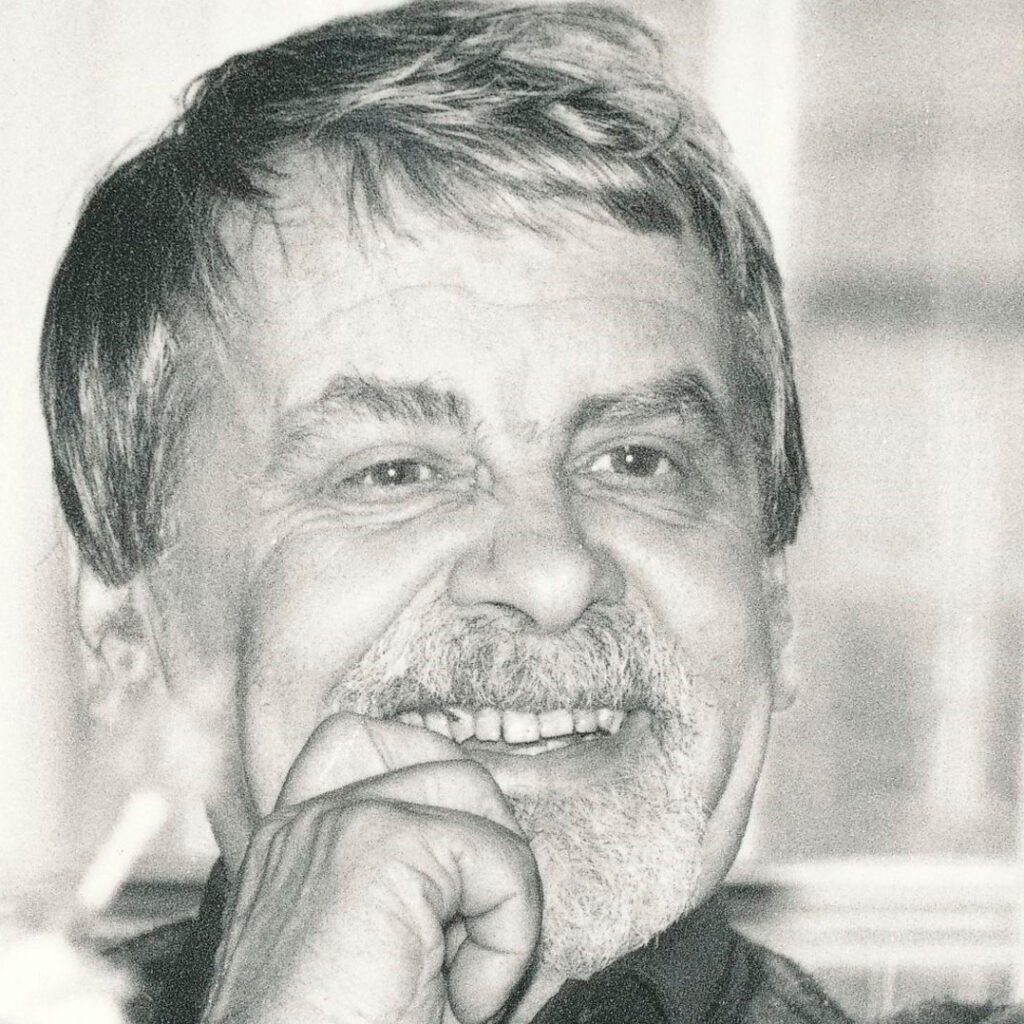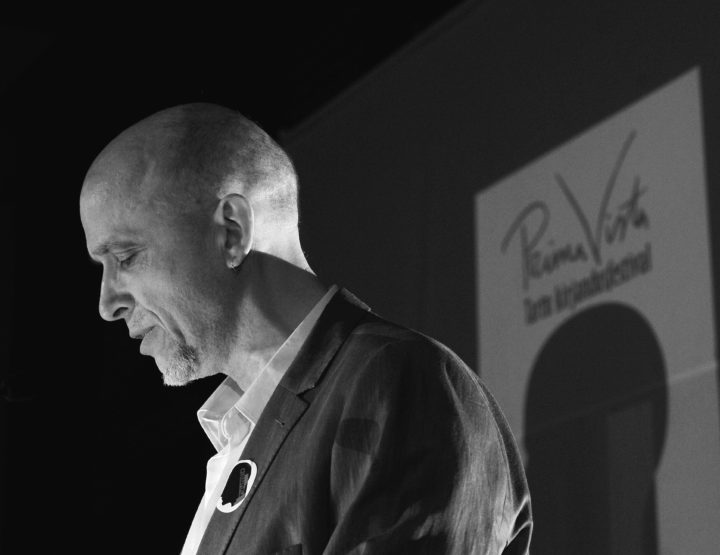Mati Unt (1944–2005), who would have turned 80 this year, first became known to his peers as a prose writer more than six decades ago. His memory lives on, and one could say that Estonia is even experiencing its own Unt “boom”. Writer Mihkel Mutt recently published a comprehensive biography titled The Butterfly Who Flew Too Close: Mati Unt and His Era, which explores his late friend’s life as an author, essayist, theater director, and human.
Mati Unt was born on January 1, 1944, in the little town of Linnamäe, Voore Parish. His family farmstead bore an endearing and quite literal name: Kodu, or “home”. Alas, Estonian homes were in danger when Mati came into the world, as the Second World War’s eastern front had just swept across the country, and the German occupation was replaced by Russian occupation. They were hard and complicated times, just as times have almost always been in Estonia. We can only imagine the conversations and emotions in the little farmhouse of Mati’s Stalin-era childhood—conversations that were bound to influence his later life. The vista from the glass veranda of that hilltop house was spectacular.
Mati’s schooling in a fieldstone schoolhouse in Leedimäe ended in 1958, only to continue at the nationally renowned Secondary School No. 8 in Tartu. The Estonian language teacher Vello Saage maintained a lofty literary spirit there; it was a time when writers were admired, and literature was in vogue. Saage’s students published a literary almanac titled Tipa-Tapa (“baby steps”). Mati, who was talented in several fields, became its primary illustrator. Yet, it was also in those years that he wrote his first novel, Farewell, Yellow Cat, published when he enrolled at the University of Tartu in 1963 to study Estonian and journalism.
The book became a sensation among Mati’s peers, being a fully mature “real novel” by a brand-new author. Literature-loving university students nationwide read it, discussed it, and either approved or condemned it. But above all, they marveled. It is a coming-of-age novel in which the protagonist, someone with whom many young men of that period could identify, searches for himself but only ends up making seemingly casual and simple relationships and discussions hard and burdensome. Young Estonian readers received their very own local Holden Caulfield (Salinger’s The Catcher in the Rye was published in Estonian translation in 1961).
The novel’s success came as no surprise, as it was remarkably different from earlier post-war Estonian literature (which was also printed in significantly smaller quantities, not to mention much lower quality, compared with Estonian diaspora literature of that same period). Still, timid new winds had begun to blow. Villem Gross (1922–2001) published the young-adult novel Spreading the Wings in 1958 and his very popular Unfinished Single-Family Dwelling for Sale, a novel about a crumbling young marriage (a topic the Soviet system preferred to avoid back then) in 1962. Unt mentions the latter novel, albeit with light sarcasm (and no doubt on purpose), in his short novel On the Possibility of Life in Space (1967). One can assume that the success of Gross’s book caught Unt’s attention (who was extremely sensitive about his own reception) and even made him jealous.
The unexpectedly warm response to Unt’s first novel inspired him to write another in 1964: Debt. Whereas books that addressed youth sexuality (some strongly, others weakly; some psychologically, others less so) were published during Estonia’s first interwar independence, and the genre was also practiced in exile, they generally weren’t available to young readers under Soviet occupation; what’s more, the plots of such books were usually set in the past and/or strikingly different conditions. Mati Unt was writing here and now. Cautiously, yes, but in an almost revolutionary way, given the falsely puritanical morals of Soviet society.
Debt successfully garnered a societal response. One book discussion in Tartu drew a packed auditorium, primarily university students. Passions ran high during the debate, and Unt’s work exited the boundaries of its subject matter, turning dangerously societally critical. The atmosphere was tense, and some speeches were shockingly bold, as if the event was an opportunity to test the boundaries of the 1960s thaw. Mati stood before the crowd with competing expressions of astonishment, fear, and satisfaction. He’d been honest and sincere in his writing, taking only a few minor divergences from the standard ideology. The Catcher in the Rye is also popularly believed to have influenced Unt’s Debt in terms of its subject matter, style, and even sentence structure.
Unt’s On the Possibility of Life in Space and Via Regia (1975)—his second and sixth books, respectively—were re-published this year in the Loomingu Raamat classic series. As of 1967, he wrote a work of fiction almost every year—mainly short novels and stories—and could already count himself as a fruitful and prolific author. Still, he probably had no idea his ambitions were already drifting away from literature.
The two novels made newly available this year are clearly products of their era, starting with the title of the former. Space was a popular topic in the 1960s, and cinema marquees advertised Russian films starring actors who played astronomers and astrophysicists (Supernova was a similar 1965 Estonian film). There was much discussion and writing about the conflict between lyricists and physicists. Some elements, including the two protagonists (a lyricist and a physicist), can be found in On the Possibility of Life in Space, though the ending is more tragic than heroic. Thanks to plentiful references, the book offers a glimpse into the author’s own widening and diversifying literary interests, though it didn’t garner more attention than his first work; it seems people were getting used to Unt. Soon, several other exciting young prose writers entered the scene: Arvo Valton, Enn Vetemaa, Rein Saluri, Teet Kallas, Vaino Vahing, and more.
Via Regia, the second republished Unt novel, confirms suspicions that can be drawn from his earlier works: he was becoming increasingly engrossed in theater. Unt worked at the Vanemuine Theater in Tartu from 1966–1972 and was the director of literature at the Tallinn Youth Theater starting in 1975. He was a dynamic force in renewing the Tartu theater scene along with several famous Estonian actors and directors. Mare Puusepp, the “prima donna” of that renewal, later became his wife.
Eventually, literature was put on Unt’s back burner, and drama became the dominant topic of his writing. Most of Via Regia takes place in the theater, several characters are based on theatrical prototypes, and a number of scenes are exact accounts of actual events. Unt’s directing career began the moment it was published.
It’s worth mentioning the plays and dramatic adaptations he wrote (15 altogether), the most unusual of which was Phaethon, Son of the Sun (1968, staged in Vanemuine Theater). Critic and theatrical scholar Lea Tormis wrote: “Although Phaeton has no primitive symbolism or simplified parallels to the present, the author shows palpable concern for the modern day and a clear attitude towards the struggle between progress and reactionary forces.”
Therefore, Unt’s literary style can be perceived in the play as well. He nevertheless continued writing many successful books, the most outstanding of which is The Autumn Ball (1979): an urban novel, or rather a novel set in a specific area of the city. He and his girlfriend at the time, actress Kersti Kreismann, were living in Tallinn’s new Mustamäe district; their apartment was perpetually open to a revolving crowd of bohemian guests as they experienced the joys and pains of theater work.
A year before The Autumn Ball came out, writer Arvo Valton (b. 1935) was also inspired by the organically strange and novel architectural district and published a collection of short stories that included “Mustamäe Romance”. Compared to Unt’s novel, however, it is more of a general introduction to the genre.
Maarja Vaino has analyzed the symbol of “home” in the work: “In Tallinn, Unt socialized with artists and architects, learning concepts of spatial theory that were popular at the time. This broad range of architectural utopias is most prominent in The Autumn Ball.”
The Autumn Ball was turned into a feature film in 2007—or rather, director Veiko Õunpuu based his film on the novel. Unfortunately, Unt passed away two years before its release and could not participate in the production. He was, however, a screenwriter for two earlier films: Ask the Dead About the Price of Death (1977) and In One Hundred Years in May (1986). Critics later accused Unt of displaying excessive Soviet allegiance in his manuscripts, especially in the latter film, which depicts the final four days in the life of underground communist Viktor Kingissepp in May 1922. The author claimed he was only interested in Kingissepp’s story as that of a tragic historical figure, asserting that he gathered the materials in a fervor and wrote the script in accordance with his conscience.
Another of Unt’s novels that sparked discourse when it was published is Things in the Night (1990), which has been called the “most irony-filled work of Estonian literature”. If reviewers are to be believed, then the complex and uniquely abstruse postmodernist work attempts to demonstrate literature’s endless possibilities, which I believe are truly endless and actually lead nowhere. Alternately, it can be seen as Unt’s attempt to impress his readers. Although it is an exhausting novel, it offers some excitement and forces one to reevaluate readability. The title was taken from a scene in the beloved and easily readable Summer by the popular classic Oskar Luts (1887–1953), in which the protagonist holds a late-night discussion with his dog. Overall, Luts was an inspiration to Unt in both literature and the theater.
Unt’s novel Diary of a Blood Donor (1990) intentionally echoes Bram Stoker’s Dracula (1897) but casts the romantic-nationalist Estonian poet Lydia Koidula’s (1843–1886) husband Eduard Michelson in the role of Dracula, unable to cope with his wife being exhumed from her grave in Kronstadt and reburied in Estonia, he sets out to commit bloody vampirism.
Brecht at Night (1997) could have been a historical novel, but Unt wouldn’t be Unt if he were to limit himself to simply recounting how Bertolt Brecht and his wife took refuge with the Estonian-born Finnish writer Hella Wuolijoki in Helsinki—especially considering that the Soviet Union was hatching malicious plans against the Republic of Estonia at that time. Although fragmentary, the novel is also noteworthy in that it shows the direction in which Unt’s writing was headed.
Alas, we will never know the possible destination, as he only published plays from then until his death in 2005. Serving two masters is an overwhelming task, and one might expect that the world of actors—one offering an insatiable thirst for living and rewarding work as a collective—seemed much more attractive than the solitude of a writer’s den. Seeing one’s audience at premieres and receiving their applause and gratitude in person would no doubt make someone with any vanity gravitate toward the genre as well.
That being said, theater is also more thankless than literature: performances will be forgotten, and no recording can adequately convey the atmosphere and emotions one felt. A book may collect dust for years and years, but there’s still hope that one day, a hand will pull it from the shelf, and new eyes will latch onto the sentences. What’s more, someone can give it new life in the form of another print, as recently happened to two of Unt’s works.
Maimu Berg (b. 1945) is an Estonian writer, reviewer, translator, journalist, and politician.
Via regia/On the Possibility of Life in Space
Via regia/Elu võimalikkusest kosmoses
Kultuurileht, 2023, 127 pp.
ISBN 9789916713716





